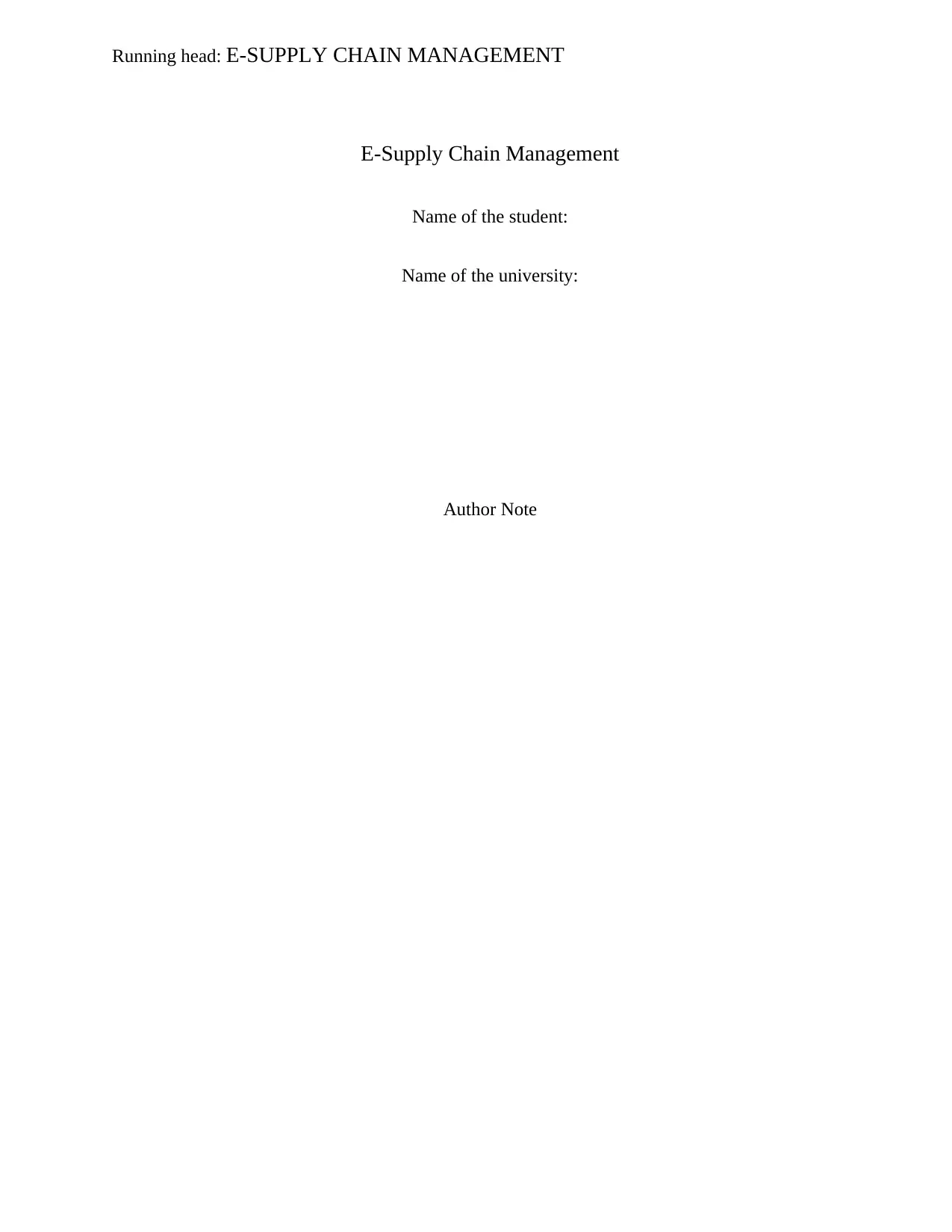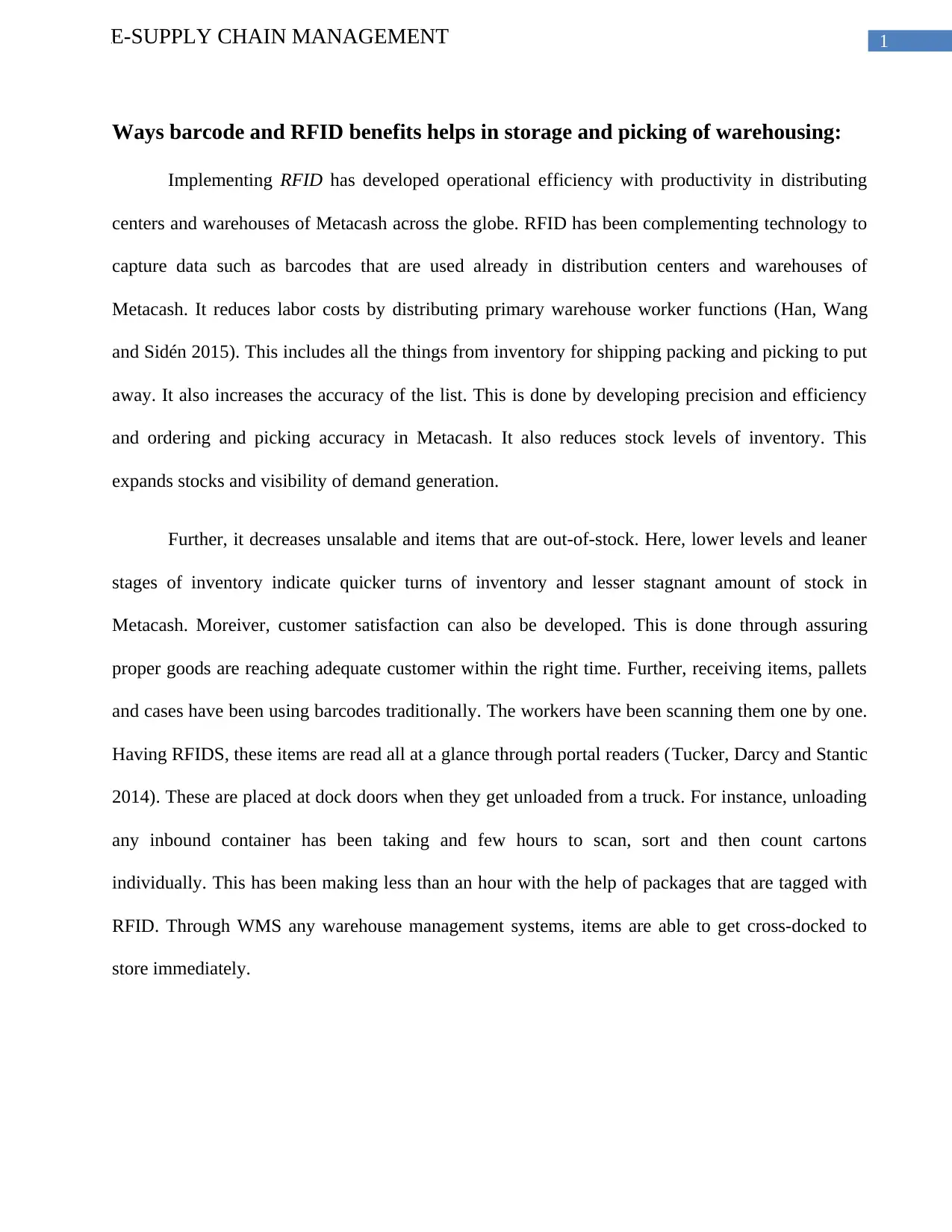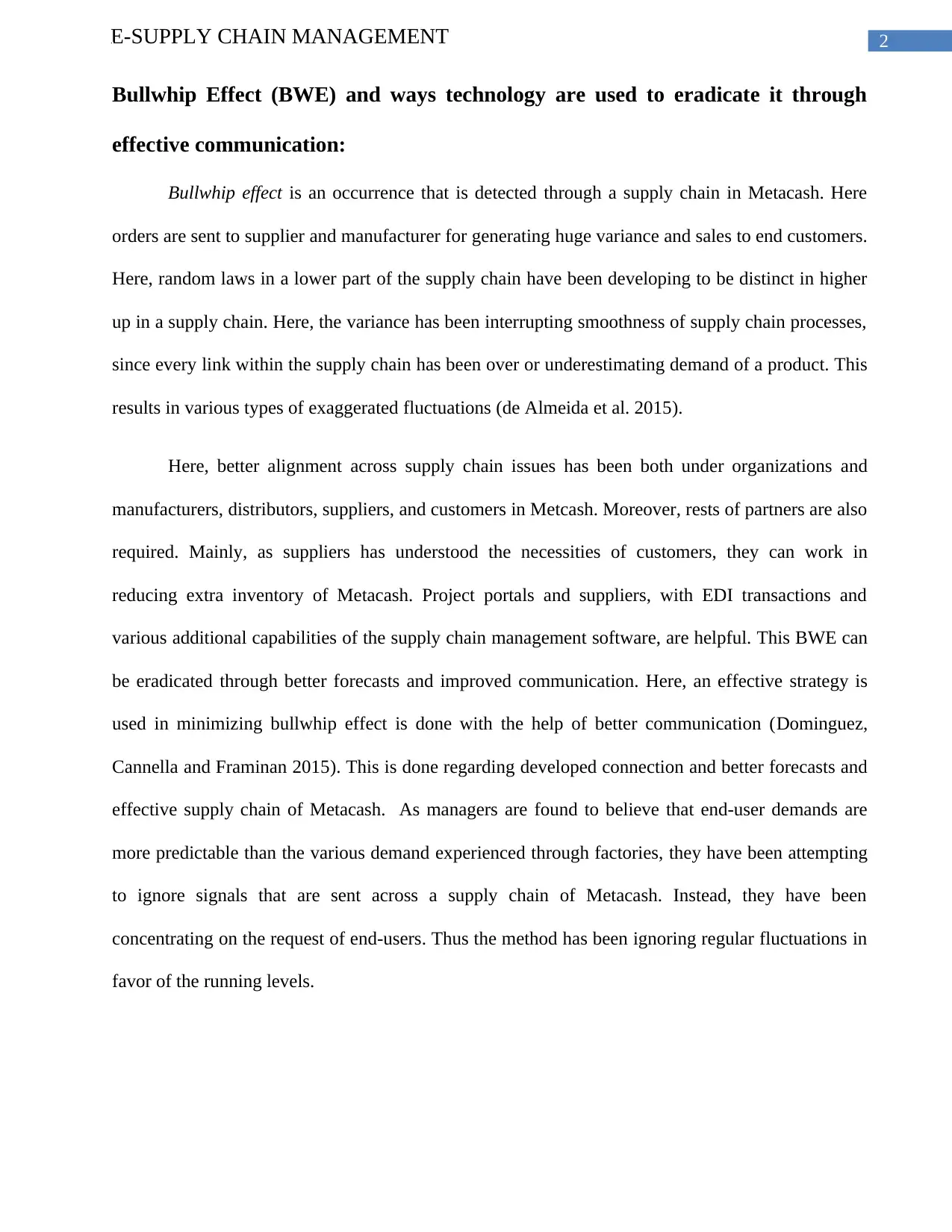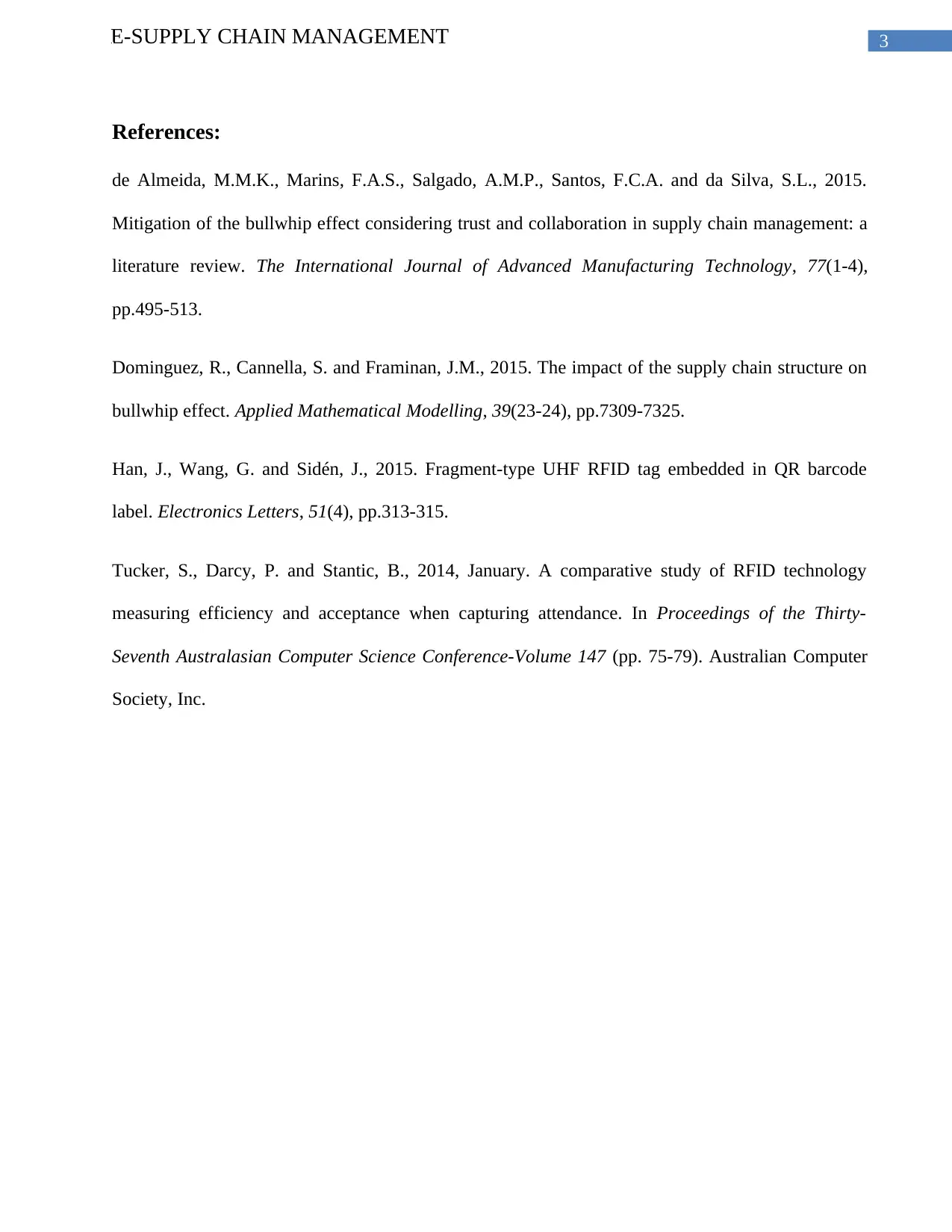Ways Barcode and RFID Benefits in E-Supply Chain Management
VerifiedAdded on 2023/06/05
|4
|845
|108
AI Summary
This article discusses the benefits of implementing RFID and barcode technology in E-Supply Chain Management, including improved accuracy, reduced labor costs, and increased customer satisfaction. It also explores how effective communication can help eradicate the Bullwhip Effect, a common occurrence in supply chain management. The article cites relevant studies and literature to support its claims.
Contribute Materials
Your contribution can guide someone’s learning journey. Share your
documents today.
1 out of 4










![[object Object]](/_next/static/media/star-bottom.7253800d.svg)